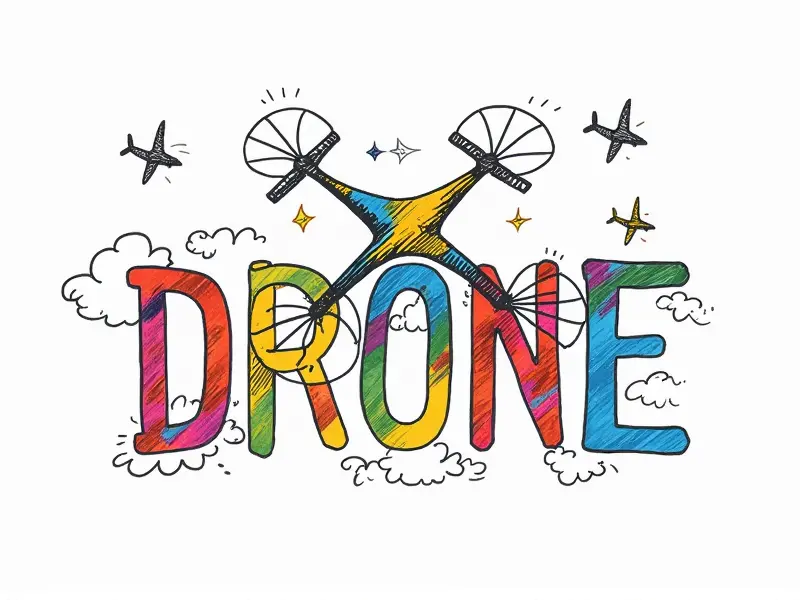Best FPV camera angle?

Optimal FPV Camera Angle Explained
The optimal FPV (First-Person View) camera angle is crucial for achieving a smooth and clear flight experience. The ideal angle varies based on the type of drone, its intended use, and the pilot's preferences. For instance, racing drones often require different angles compared to freestyle or cinematic drones.
Perfect FPV Camera Placement Guide
The placement of your FPV camera is a critical aspect that can significantly impact your flight experience. Here are some key points to consider:
- Mounting Position: The camera should be mounted in the center or slightly forward for better visibility.
- Angle Adjustment: Adjust the angle of the camera based on your drone's size and flight dynamics. A slight downward tilt can help you see obstacles more clearly.
- Field of View (FOV): Ensure that the FOV is wide enough to capture all necessary details without distortion.
Top FPV Camera Angles Revealed
The best camera angles for FPV vary depending on your drone's purpose. Here are some top angles:
- Racing Drones: A 30-degree downward tilt is ideal for racing drones, providing a clear view of the ground and obstacles.
- Cinematic Drones: For cinematic shots, a more level angle or slight upward tilt can enhance visual appeal.
Best FPV Setup for Clear Views
A well-optimized setup ensures clear views during flight. Key components include:
- Camera Quality: Use high-quality cameras with good resolution and low latency.
- Vision Systems: Implement advanced vision systems for better obstacle avoidance.
- Video Transmission: Opt for reliable video transmission technology to maintain a clear signal.
Maximizing Visibility with FPV Cameras
To maximize visibility, consider the following tips:
- Lighting Conditions: Adjust your camera settings based on lighting conditions to avoid overexposure or underexposure.
- FOV Adjustment: Fine-tune the FOV for optimal coverage without distortion.
- Pilot Positioning: Ensure that you are positioned correctly relative to your transmitter and monitor.
Ideal FPV Camera Positioning Tips
The positioning of your FPV camera is essential for achieving the best flight experience. Here are some tips:
- Center Alignment: Align the camera in the center of your drone to maintain balance.
- Angle Adjustment: Adjust the angle based on your specific needs and preferences.
- Motion Compensation: Use gimbal systems or other motion compensation techniques for smoother footage.
Ultimate FPV Camera Angle Checklist
To ensure you have the best possible setup, follow this checklist:
- Camera Type: Choose a camera that suits your drone's purpose and performance requirements.
- Mounting Position: Ensure proper mounting to avoid vibrations or misalignment.
- Angle Adjustment: Fine-tune the angle for optimal visibility and control.
Achieving the Best FPV View Angle
To achieve the best view angle, consider these factors:
- Pilot Experience: Adjust angles based on your skill level to enhance safety and performance.
- Different Environments: Adapt angles for different environments such as indoor or outdoor flying.
- Obstacle Avoidance: Optimize angles to minimize the risk of collisions with obstacles.
FPV Camera Placement for Smooth Flight
The placement of your FPV camera can greatly affect the smoothness and stability of your flight. Here are some guidelines:
- Vibration Dampening: Use vibration dampeners to reduce camera shake.
- Pilot Comfort: Ensure that you have a comfortable position while flying, with clear visibility on your monitor.
- Battery Management: Keep an eye on battery levels to avoid sudden drops in performance.
Optimal FPV Camera Angle for Racing Drones
Racing drones require specific angles to enhance speed and agility. Here are some recommendations:
- Downward Tilt: A 30-degree downward tilt is optimal for racing, providing clear visibility of the ground.
- Narrow FOV: Use a narrower FOV to focus on immediate surroundings and obstacles.
- Pilot Positioning: Ensure that you are positioned correctly to maintain full control over your drone.
Perfect FPV Camera Placement for Speed
To maximize speed while maintaining visibility, consider the following placement tips:
- FOV Optimization: Optimize FOV for faster reaction times and better obstacle detection.
- Pilot Comfort: Ensure that you are comfortable in your flying position to maintain focus during high-speed flights.
- Battery Efficiency: Use efficient battery management techniques to sustain speed throughout the flight.
Conclusion
The optimal FPV camera angle is a critical factor that can greatly enhance your drone flying experience. By carefully considering factors such as mounting position, angle adjustment, and FOV optimization, you can achieve clear views and smooth flights. Whether you are racing or filming cinematic shots, the right setup will ensure that you get the most out of your FPV drone.

